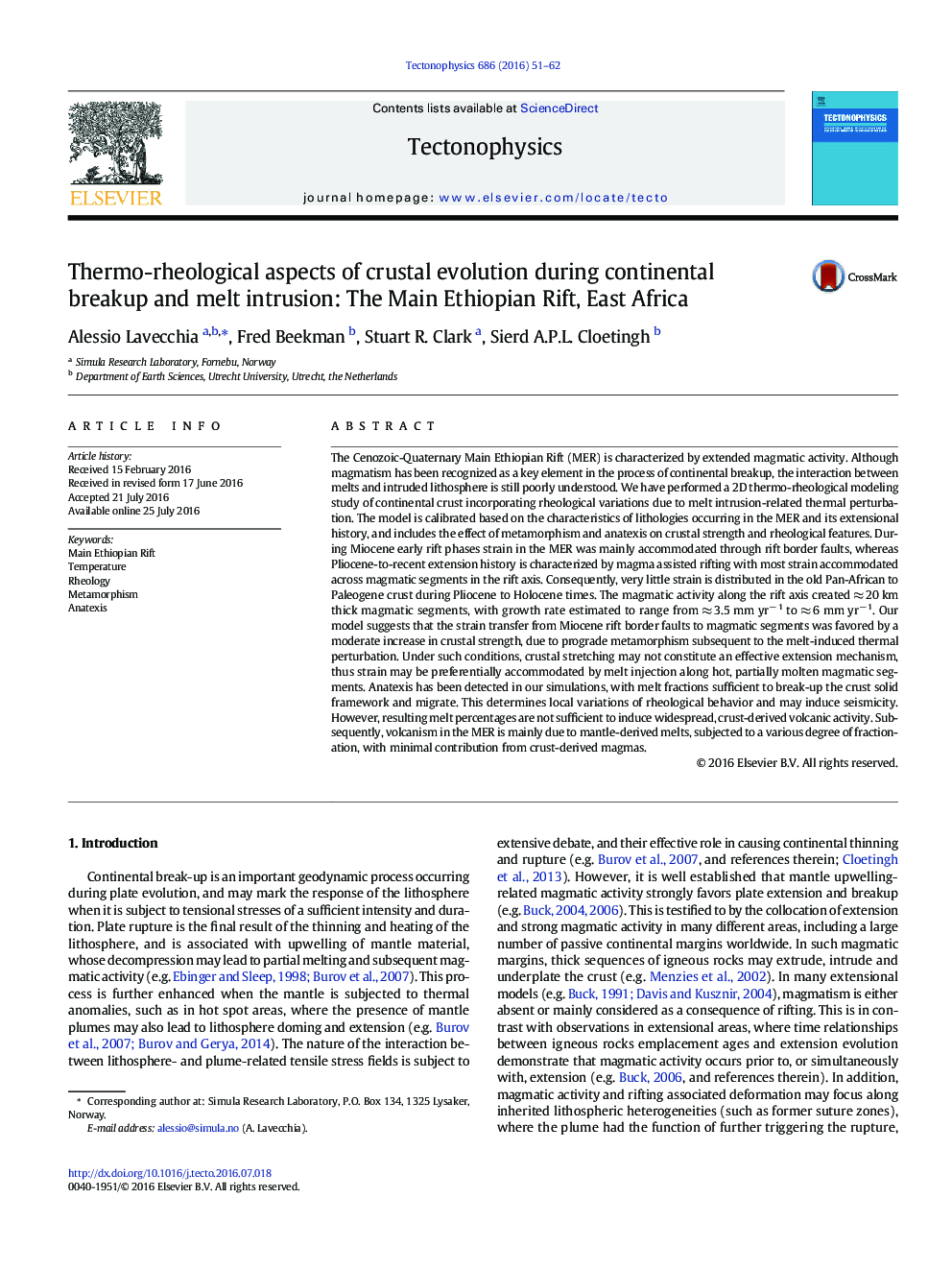| کد مقاله | کد نشریه | سال انتشار | مقاله انگلیسی | نسخه تمام متن |
|---|---|---|---|---|
| 6433261 | 1636712 | 2016 | 12 صفحه PDF | دانلود رایگان |
- Metamorphism determines pronounced rheological variations in the MER crust.
- Crustal strengthening may promote magma-assisted rifting.
- Crustal anatexis may induce seismicity, but does not cause intense volcanism.
The Cenozoic-Quaternary Main Ethiopian Rift (MER) is characterized by extended magmatic activity. Although magmatism has been recognized as a key element in the process of continental breakup, the interaction between melts and intruded lithosphere is still poorly understood. We have performed a 2D thermo-rheological modeling study of continental crust incorporating rheological variations due to melt intrusion-related thermal perturbation. The model is calibrated based on the characteristics of lithologies occurring in the MER and its extensional history, and includes the effect of metamorphism and anatexis on crustal strength and rheological features. During Miocene early rift phases strain in the MER was mainly accommodated through rift border faults, whereas Pliocene-to-recent extension history is characterized by magma assisted rifting with most strain accommodated across magmatic segments in the rift axis. Consequently, very little strain is distributed in the old Pan-African to Paleogene crust during Pliocene to Holocene times. The magmatic activity along the rift axis created â 20 km thick magmatic segments, with growth rate estimated to range from â 3.5 mm yrâ 1 to â 6 mm yrâ 1. Our model suggests that the strain transfer from Miocene rift border faults to magmatic segments was favored by a moderate increase in crustal strength, due to prograde metamorphism subsequent to the melt-induced thermal perturbation. Under such conditions, crustal stretching may not constitute an effective extension mechanism, thus strain may be preferentially accommodated by melt injection along hot, partially molten magmatic segments. Anatexis has been detected in our simulations, with melt fractions sufficient to break-up the crust solid framework and migrate. This determines local variations of rheological behavior and may induce seismicity. However, resulting melt percentages are not sufficient to induce widespread, crust-derived volcanic activity. Subsequently, volcanism in the MER is mainly due to mantle-derived melts, subjected to a various degree of fractionation, with minimal contribution from crust-derived magmas.
Journal: Tectonophysics - Volume 686, 24 August 2016, Pages 51-62
